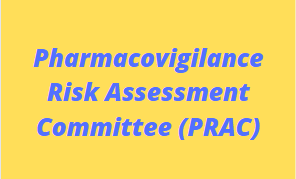Introduction
EMA’s Pharmacovigilance Risk Assessment Committee (PRAC) is responsible for assessing and monitoring the safety of human medicines. It constitutes experts in medicines safety from regulatory authorities in Member States, scientific experts and representatives of patients and healthcare professionals, which are nominated by the European Commission.
- EMA supports the PRAC by providing data from clinical practice available in electronic health records or prescription databases.
- The PRAC was formally established in line with the pharmacovigilance legislation which came into effect in 2012 to help strengthen the safety monitoring of medicines across Europe.
Composition of PRAC
1. The PRAC consists of:
– A Chair;
– One member and one alternate member appointed by each of the EU Member States;
– One member and one alternate member appointed by each of the EEA-EFTA States;
– Six members appointed by the European Commission, with a view to ensuring that the relevant expertise is available within the PRAC, including clinical pharmacology and pharmacoepidemiology, on the basis of a public call for expressions of interest;
– One member and one alternate member appointed by the European Commission, on the basis of a public call for expressions of interest, after consulting the European Parliament, in order to represent healthcare professionals;
2. All members and alternate members of the PRAC shall be appointed on the basis of their relevant expertise in pharmacovigilance matters and risk assessment of medicinal products for human use, in order to guarantee the highest levels of specialist qualifications and a broad spectrum of relevant expertise. For this purpose, Member States shall liaise with the Management Board and the European Commission in order to ensure that the final composition of the PRAC covers the scientific areas relevant to its tasks.
3. The members and the alternates, as appropriate, of the PRAC shall be appointed for a term of 3 years which may be prolonged once. After this second term and thereafter, appointment should be renewed following the appointment procedure as described in Article 61a of Regulation 726/2004 and could be prolonged once more.
Role of PRAC
The PRAC is responsible for assessing all aspects of risk management of human medicines, which includes:
- Detection, assessment, minimisation and communication of the risk of adverse reactions, while taking the therapeutic effect of the medicine into account
- Design and evaluation of post-authorisation safety studies
- Pharmacovigilance audit
The PRAC provides recommendations on questions on pharmacovigilance and risk management systems, including the monitoring of their effectiveness, to the:
- Committee for Medicinal Products for Human Use (CHMP) for centrally authorised medicines and referral procedures
- Coordination Group for Mutual Recognition and Decentralised Procedures – Human (CMDh) on the use of a medicine in Member States
- the EMA secretariat, Management Board and European Commission, as applicable.


